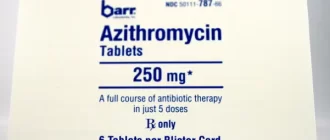Amoxicillin is commonly the preferred medication by dentists for treating tooth infections because it is highly effective and has limited stomach-related side effects. The American Dental Association (ADA) suggests a dosage of 500 mg of oral amoxicillin taken three times daily for a period of 3 to 7 days for individuals who are not allergic to penicillin. In cases where amoxicillin is not suitable, oral penicillin can be used as an alternate option, with a recommended dosage of 500 mg taken four times daily for the same duration.
Typically, amoxicillin helps alleviate tooth infection symptoms within a few days. However, it is essential to keep in mind that like any medication, amoxicillin may also have side effects.
It is worth noting that if you have an allergy to penicillin-type drugs, your dentist might prescribe alternative antibiotics such as oral cephalexin, azithromycin, or clindamycin. The dosage of these antibiotics varies depending on the specific type used. For example, oral cephalexin is typically prescribed at 500 mg four times per day, while oral azithromycin starts at 500 mg per day. The full course of treatment usually lasts between five to seven days, sometimes extending up to 14 days.
The ADA highlights that the initial antibiotics recommended for a tooth infection are amoxicillin and penicillin V potassium, which are both in the penicillin category of drugs. These antibiotics function by either eliminating bacteria or stopping their growth. It is crucial to keep in mind that penicillin-type drugs cannot treat viral infections.
In summary, the ADA suggests that a five-day course of amoxicillin is generally sufficient for treating a tooth infection. However, it is crucial to follow your dentist’s instructions closely and complete the full prescribed dose of antibiotics to ensure effective treatment. If you have any concerns or allergies, it is advisable to consult your healthcare provider for individualized guidance. Please remember that this information is derived from online research and should not be considered a substitute for professional medical advice or diagnosis.




